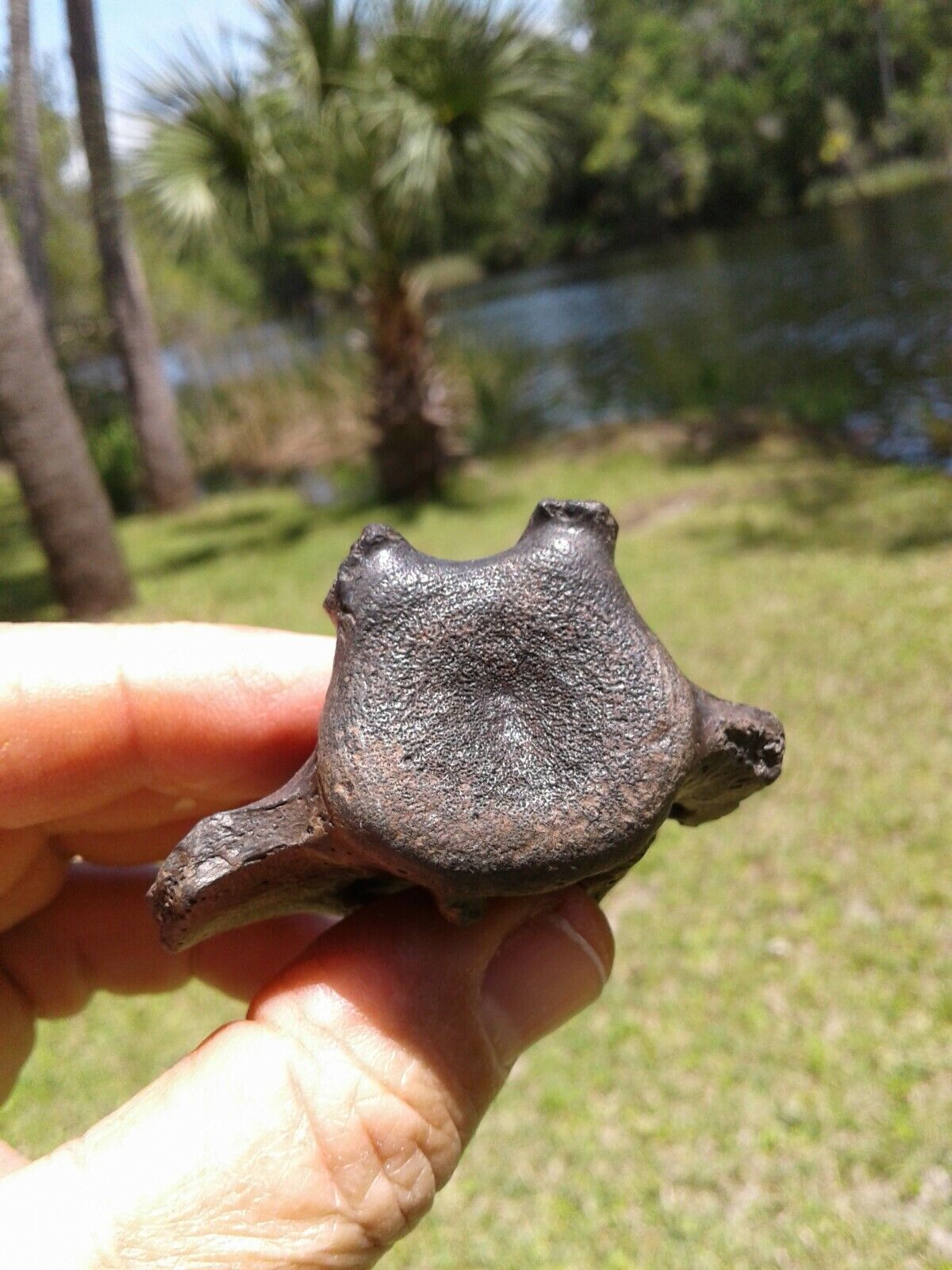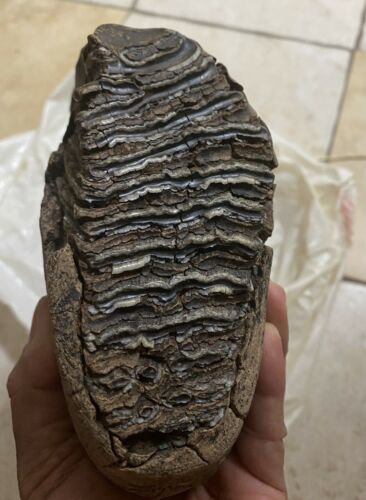-40%
Titanothere Brontothere glob of matrix w/ molar and archaeotherium incisor too !
$ 311.51
- Description
- Size Guide
Description
This is a cool piece I found this fall on our Wyoming chadron layer lease. It is a solid piece of chadron layer sediment that came out in a clod. I could see the titanothere molar barely showing. I started prepping it and found a great enteledont or archaeotherium incisor from a big adult. There are some other bone fragments in the sediment. I can also see remnants of a small animal metatarsal. Instead of just prepping out the teeth I decided to leave it as an in situ specimen. I sealed it with paleobond so it wouldn't dry out and fall apart. It is stable and as found. Cool to find an upper molar from a nice sized titanothere along with a large tooth from a very large predator in the same clod. The predator tooth also has the molar to go with it. Cool conversation piece.Brontotheriidae
From Wikipedia, the free encyclopedia
Jump to navigation
Jump to search
Brontotheres
Temporal range:
56–34
Ma
PreЄ
Є
O
S
D
C
P
T
J
K
Pg
N
Eocene
Brontotherium hatcheri
skeleton at the
National Museum of Natural History
,
Washington, DC
Scientific classification
Kingdom:
Animalia
Phylum:
Chordata
Class:
Mammalia
Order:
Perissodactyla
Family:
†
Brontotheriidae
Marsh
, 1873
Genera
See text
Synonyms
Menodontidae
Titanotheriidae
Brontotheriidae
, also called
Titanotheriidae
, is a
family
of extinct mammals belonging to the order
Perissodactyla
, the order that includes
horses
,
rhinoceroses
, and
tapirs
. Superficially, they looked rather like
rhinos
, although they were actually more closely related to horses; Equidae and Brontotheriidae make up the suborder
Hippomorpha
. They lived around 56–34 million years ago, until the very close of the
Eocene
.
Contents
1
Characteristics and evolution
2
Classification of Brontotheres
3
Notes
4
References
5
External links
Characteristics and evolution
[
edit
]
Megacerops
Skull of
Rhinotitan
Brontotheres retain four toes on their front feet and three toes on their hind feet. Their teeth are adapted to shearing (cutting) relatively nonabrasive vegetation. Their
molars
have a characteristic W-shaped
ectoloph
(outer shearing blade).
The evolutionary history of this group is well known, due to an excellent fossil record in
North America
.
[1]
The earliest brontotheres, such as
Eotitanops
, were rather small, no more than a meter in height, and were hornless.
Brontotheres, over time, evolved massive body sizes, although some small species, such as
Nanotitanops
, did persist through the Eocene. Some genera, such as
Dolichorhinus
,
evolved
highly elongated skulls. Later brontotheres were massive in size, up to 2.5 m (8.2 ft) in height with bizarre horn-like skull appendages. For instance the
North American
brontothere
Megacerops
evolved large
sexually dimorphic
paired horns above their noses. The sexually dimorphic horns suggest that brontotheres were highly
gregarious
(social) and males may have performed some sort of head-clashing behavior in competition for mates. However, unlike rhinos, the horns of brontotheres are composed of bone, the
frontal bone
and
nasal bone
, and were placed side-to-side rather than front-to-back.
Brontotheres probably became extinct due to an inability to adapt to drier conditions and tougher vegetation (such as grasses) that spread during the
Oligocene
.
[1]
Classification of Brontotheres
[
edit
]
Classification for Brontotheriidae after Mihlbachler 2008
[2]
And Mader 2010
[3]
Brontotheriidae
Eotitanopinae
Palaeosyopinae
Brontotheriinae
Brontotheriini
Rhadinorhinina
Telmatheriina
Brontotheriina
Brontotheriita
Embolotheriita
Two classification systems for Brontotheriidae are presented below. The first contains 43 genera and 8 subfamilies, and although it is based on a 1997 publication by McKenna and Bell, it summarizes research that was conducted before 1920 and is badly outdated. The second classification is based on 2004 and 2005 research by Mihlbachler et al., which indicates that many of the previous subfamily names are invalid. Several more recently discovered brontotheres are included in the newer classification.
Life reconstruction of
Protitanops curr


















